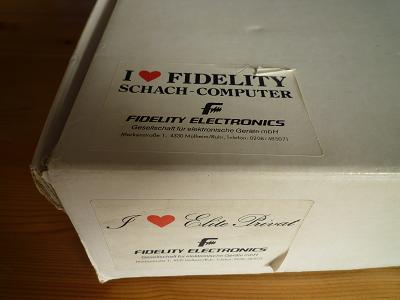
In the early/mid 1980s, when chess computer sales were at their high point, Fidelity’s German division and its distributors got involved in developing and selling their own models, in addition to the machines imported from the USA. Hence the Elite Private Line, Elite Privat, Playmatic S and RCS Granit. Machines which were not available in the UK and about which we never heard.
The Fidelity Elite Privat is an example of one of those development sideroads which chess computer manufacturers were inclined to go down during the Golden Years. It is one of the things that makes that period so interesting to me. The variety of ideas and designs. In this case the theory was to detach the program module from the board so that playing the computer could be as similar as possible to playing on a normal chessboard. So the board has clean lines, no LEDs and is as thin as possible. The program, display and chessboard LEDs are on the computer unit which, in theory, can be put out of sight. In other respects the Elite Privat is the same as my Fidelity Elite A/S Glasgow. The only differences being the German voice and the increased clock speed, 5 MHz compared with the 3.6 MHz or 4 MHz of the Elite A/S Glasgow (“C” version in the UK).
The Private Line is the early version of the Privat with the slower clock speed. The thin board idea led on to an unlikely prototype, the Soft Pack Sensory 3.5 which featured an even thinner leather-like membrane board, described and pictured on Hein Veldhuis’s website (link).
The separate board and computer unit idea, also seen on the Mephisto ESB 3000, was to reappear a decade later, with much more impact, in the Tasc R30.







